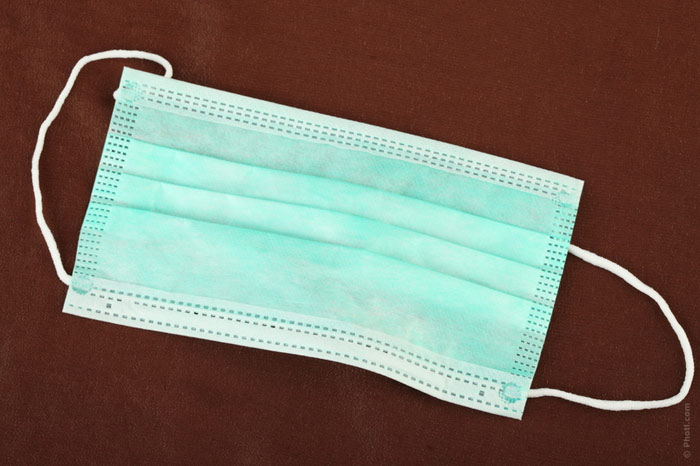 When it comes to plastic surgery, many imagine expensive operations affordable only to famous and rich who want to preserve their beauty. It is partly true because the most common surgeries performed today are rhinoplasty and breast augmentation. However, it is worth noting that first plastic surgeons were real innovators, and the development of this area extended far beyond aesthetics.
When it comes to plastic surgery, many imagine expensive operations affordable only to famous and rich who want to preserve their beauty. It is partly true because the most common surgeries performed today are rhinoplasty and breast augmentation. However, it is worth noting that first plastic surgeons were real innovators, and the development of this area extended far beyond aesthetics.
1. The name has nothing to do with plastic
The origins of plastic surgery date back to the 16th century, when an Italian physician Gaspar Tagliacozzi, using the methods described in an Indian manual about 1000 years ago, successfully recovered a patient’s damaged nose using a tissue taken from the inside of the forearm.
The term “plastic” was first used to describe these methods in 1837 – 18 years before the invention of plastic. The term comes from the Greek word “plastikos” (molded, sculptural). The experts in this area were initially much more focused on the reconstruction of deformed or damaged body parts rather than on their cosmetic correction.
By the mid-19th century, advances in anesthesia and sterilization enabled more complicated procedures. However, throughout this time, plastic surgery was not officially recognized as a branch of medicine, despite its obvious potential.
2. Anthology of breast augmentation
The first successful breast augmentation was a reconstructive, not cosmetic, surgery, since the patient had a large tumor, and a part of her left breast was removed. A German surgeon, Vincenz Czerny, used a large lipoma – benign fatty tumor – from the patient back to restore the breast. This happened in 1895, and in the next 70 years, surgeons were trying to come up with a commercially viable material for breast implants.
Paraffin, sponge, soaked with alcohol and beeswax – what was not used! Only in the early 1960s, a surgeon from Houston, Frank Gerow, first tried to apply a silicone implant.
3. How it all began
While the above-mentioned achievements in the field of anesthesia and antisepsis allowed plastic surgeons to carry out complex procedures in the early 1900s, the industry flourished only during the First World War. Due to the fact that there appeared new varieties of explosives and weapons, thousands of soldiers returned home with injuries that were literally never seen before.
It was at this time that plastic surgery began to develop, thanks largely to a London physician, Harold Gillies (New Zealander by birth), which is considered to be the father of modern plastic surgery. Recently, detailed notes have been found on more than 11,000 procedures performed on over 3 000 soldiers between 1917 and 1925, including innovative operations on skin and muscle transplantation, which no one had performed before. Since antibiotics did not exist back then, each operation was associated with a serious risk of infection.
4. The plastic surgeon and car safety
The debates about car safety have been held literally from the time they emerged. In 1935, the Readers’ Digest published an article called ” —And Sudden Death!”. Its author, Joseph C. Furnas, mainly wanted to shame careless drivers. However, in 1937, plastic surgeon Claire Straith sent the Chrysler company specific recommendations on how to improve automobile safety based on the article: use rubber instead of steel buttons, rounded door handles and so on.
5. Plastic surgery and organ transplantation
While most people believe transplantation is not directly related to plastic surgery, many of the same techniques, such as the reconstruction and reattachment of the nerves and tissues, is used in such operations. The first successful organ transplant (kidney transplant) was carried out by a well-known plastic surgeon, Joseph E. Murray, in 1954. At that time Murray was already famous for the successful treatment of burn victims and people with different deformities.
Dr. Murray later became known throughout the world, it is him who helped develop the first generation of immunosuppressive drugs in the 1960s. In 1990, he was awarded the Nobel Prize in Physiology or Medicine for his pioneering work.
6. The first successful hand transplantation is the merit of a plastic surgeon
Dr. Warren C. Breidenbach, head of the reconstructive and plastic surgery department at the University of Arizona, is considered the world’s foremost expert in the field of hand transplantation. In 1999, he became the first surgeon who successfully performed this operation.
His patient, Matthew Scott, lost his arm in an accident 14 years earlier; he was transplanted a dead man’s hand, and he learned how to use it. Previous attempts (the first one dates back to 1964, when the immunosuppressive drugs only started to develop) resulted in the patients’ immune system rejecting the donor’s hand. Since 1999, Warren C. Breidenbach has carried out 85 operations of this kind already.
7. “Medical tourism” and plastic surgery
Many people often go to the countries where health care cost is better controlled by the state to do some expensive procedures, including plastic surgery operations. For example, in countries like Mexico and Brazil, the so-called “medical tourism” is no longer a novelty. Dubai and Thailand are also gaining popularity in this area. Only in 2013, $ 4.3 billion was earned in Thailand due to foreigners seeking medical care.
8. Non-surgical lift
New York plastic surgeon, Doug Steinbrech, offers facelift without surgery. This is achieved with the help of a special device, which slowly stretches the skin for three hours (of course, under general anesthesia).
Although, in the end, the doctor makes some stitches, the treatment only lasts for 5 days and costs $ 35,000. Another doctor from New York, Doris Day, also uses non-surgical techniques with ultrasound instead of the traditional liposuction.
9. Men’s plastic surgery
Most tend to think of surgery for cosmetic purposes as a purely feminine “hobby”. However, the data shows that the number of men who undergo cosmetic procedures has increased by as much as 273 percent from 1997 to 2014.
10. Face transplant
In 2012, a plastic surgeon from Baltimore, Eduardo Rodriguez, performed the most extensive face transplant in history. His patient was Richard Norris, who attempted suicide in 1997 shooting himself in the face. He had to undergo almost a complete face transplant. Although the result was a bit strange compared to the original, it’s a phenomenal achievement. Rodriguez then reiterated his achievement in 2015, when he made a new face for the firefighter, Patrick Hardison, whose face was completely destroyed by the fire.






